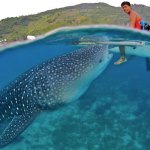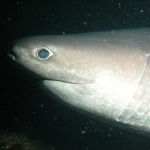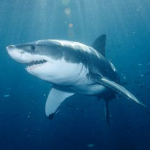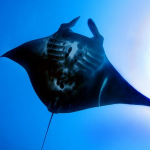Class Chondrichthyes - Cartilaginous Fish
Imagine finding a dead shark on a beach. Like other fish skeletons you’ve seen, you’d expect a rib cage and hard bones to reveal themselves as the animal decayed. Yet sharks are unique. They have no bony skeleton. They are cartilaginous fish along with skates, rays and chimeras.
Holocephali – Chimaeras
 Chimaeras are sometimes called ghost fish, ratfish or rabbit fish. Generally they live very deep on the ocean floor at depths greater than 600 feet. These fish have bulky heads and a single gill opening. Some taxonomists classify chimaeras into their own order. We’ve kept them in this order because of their historical classification in the Chondrichthyes.
Chimaeras are sometimes called ghost fish, ratfish or rabbit fish. Generally they live very deep on the ocean floor at depths greater than 600 feet. These fish have bulky heads and a single gill opening. Some taxonomists classify chimaeras into their own order. We’ve kept them in this order because of their historical classification in the Chondrichthyes.
Elasmobanchs: Sharks, Skates and Rays
Sharks: Selanchimorpha superorder
There are 440 species of sharks in nine orders (some taxonomic references don’t include the order Echinorhiniformes and thus count only eight orders). The largest shark is the whale shark, while the smallest is the dwarf lantern shark. Sharks are found in all of the world’s oceans and are common down to about 2,000 meters. Sharks are primarily saltwater fishes, but some, like the bull shark, can be found in freshwater.
Skates and Rays: Batoidea suborder
There are four living orders of rays that compose the suborder Batoidea. There are over 500 species in thirteen families and four orders. While they are closely related to sharks, they are distinguishable by their flattened bodies, enlarged pectoral fins, and gill slits on the lower surface of their bodies.
General Characteristics of Chondrichthyes
Their digestive systems have spiral valves and, with the exception of Holocephali, a cloaca.
As they do not have bone marrow, red blood cells are produced in the spleen and special tissue around the gonads. They are also produced in an organ called Leydig’s Organ which is only found in cartilaginous fishes (although some have lost it). Another unique organ is the epigonal organ which probably has a role in the immune system. The subclass Holocephali, which is a very specialized group, lacks both of these organs. Originally the pectoral and pelvic girdles, which do not contain any dermal elements, did not connect. In later forms, each pair of fins became ventrally connected in the middle when scapulocoracoid and pubioischiadic bars evolved. In rays, the pectoral fins have connected to the head and are very flexible.
A spiracle is found behind each eye on most species.
Their tough skin is covered with dermal teeth also called placoid scales or dermal denticles which feel like sandpaper (again, the Holocephali is an exception as the teeth are lost in adults, only kept on the clasping organ seen on the front of the male’s head). In most species, all dermal denticles are oriented in one direction, making the skin feel very smooth if rubbed in one direction and very rough if rubbed in the other. It is assumed that their oral teeth evolved from dermal denticles which migrated into the mouth. But it could be the other way around as the teleost bony fish Denticeps clupeoides has most of its head covered by dermal teeth (as do Atherion elymus, another bony fish). This is most probably a secondary evolved characteristic which means there is not necessarily a connection between the teeth and the original dermal scales. The old placoderms did not have teeth at all but had sharp bony plates in their mouth. Thus, it is unknown which of the dermal or oral teeth evolved first. It has even been suggested that the original bony plates of all the vertebrates are gone and that the present scales are just modified teeth, even if both teeth and the body armor have a common origin from long ago. But for the moment there is no evidence of this.
One of the main characteristics present in sharks is their heterocercal tail, which aids the shark in locomotion.
The Largest Fish is a Shark!
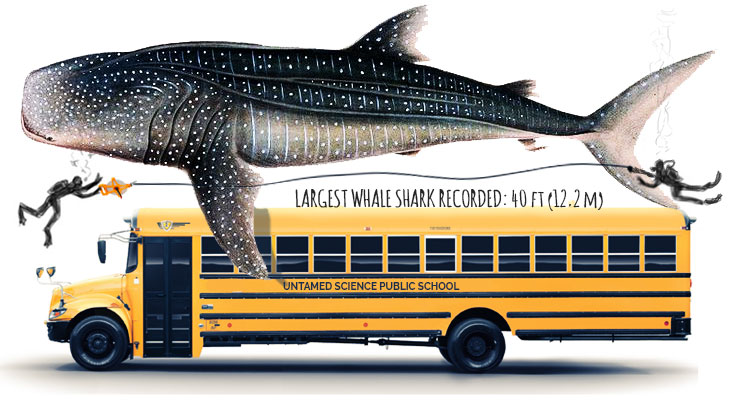
The world record for the largest fish is a whale shark measuring 40 feet (12.2 m).



